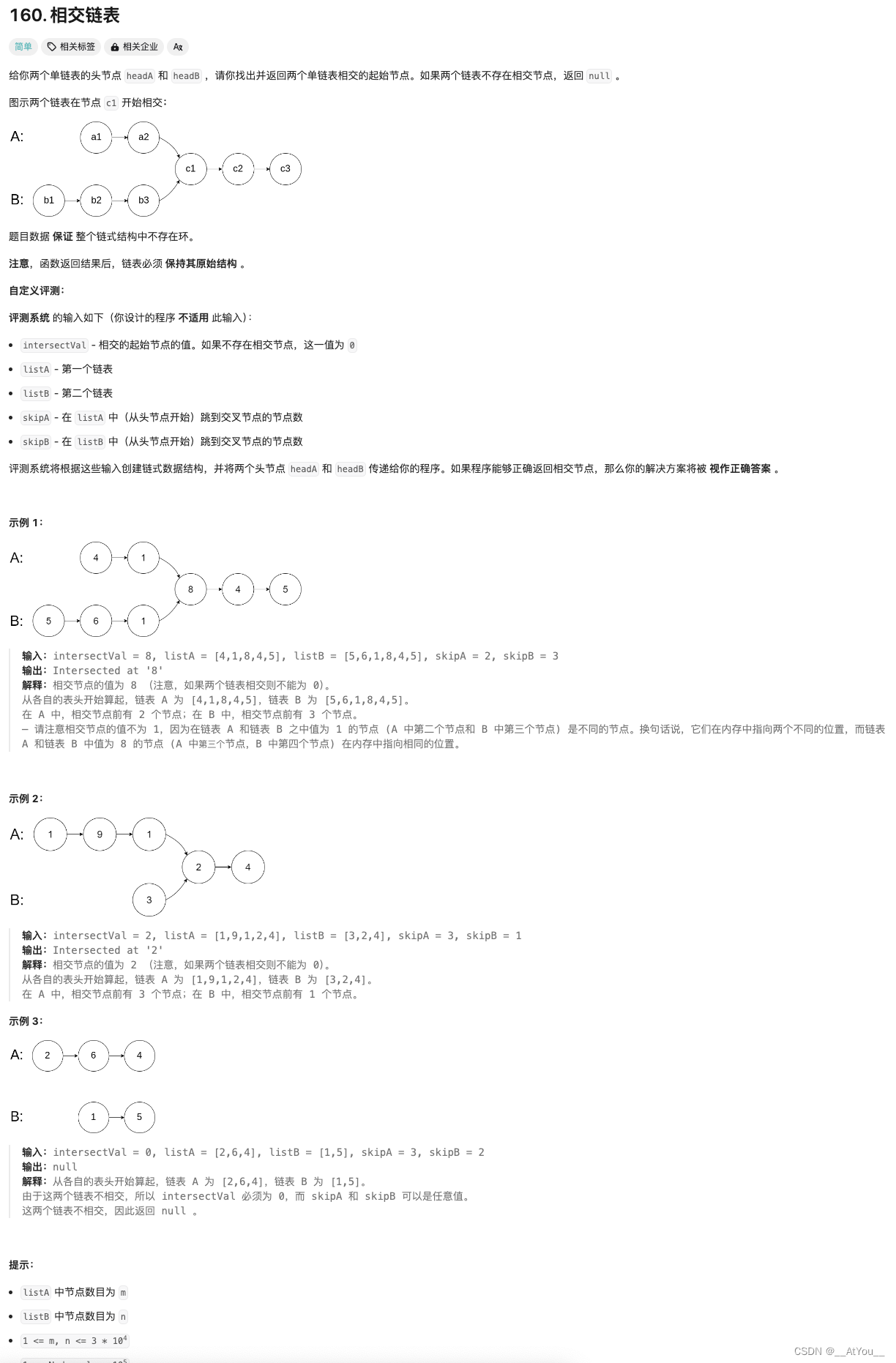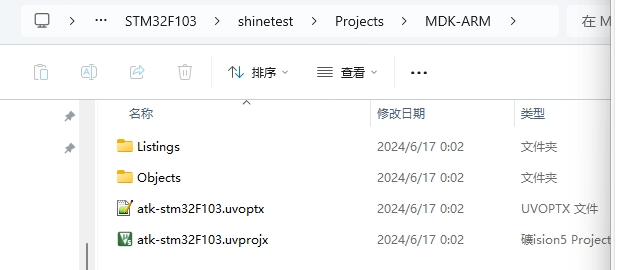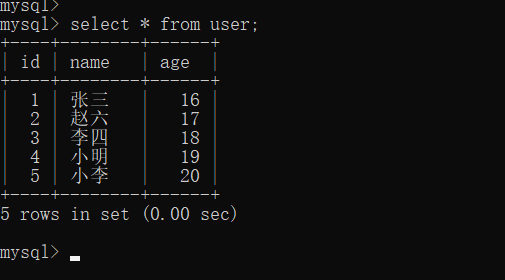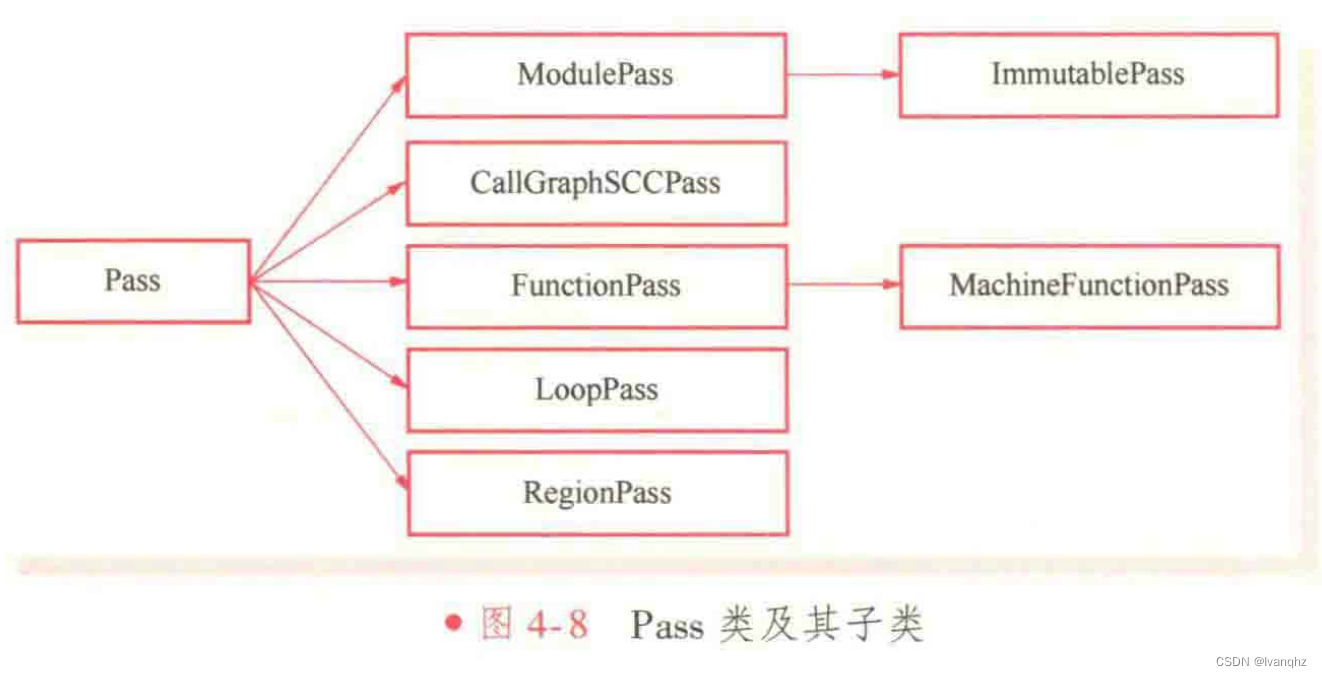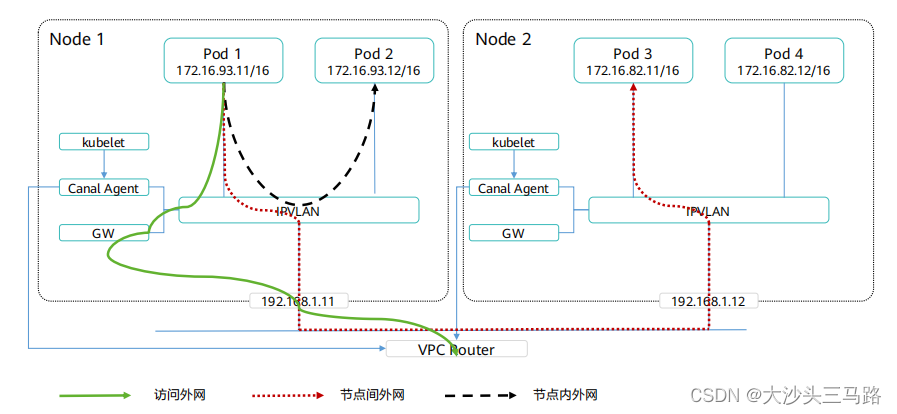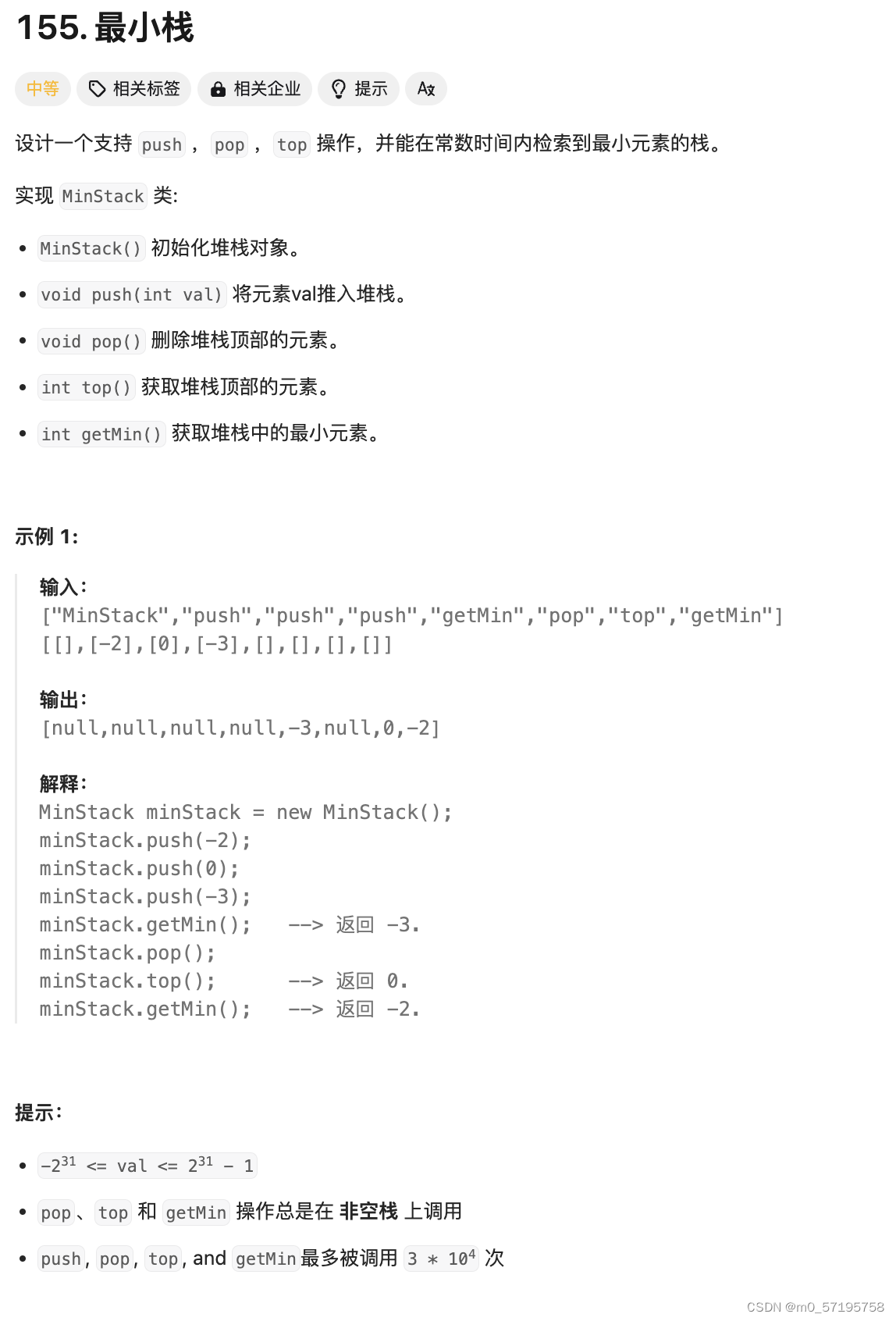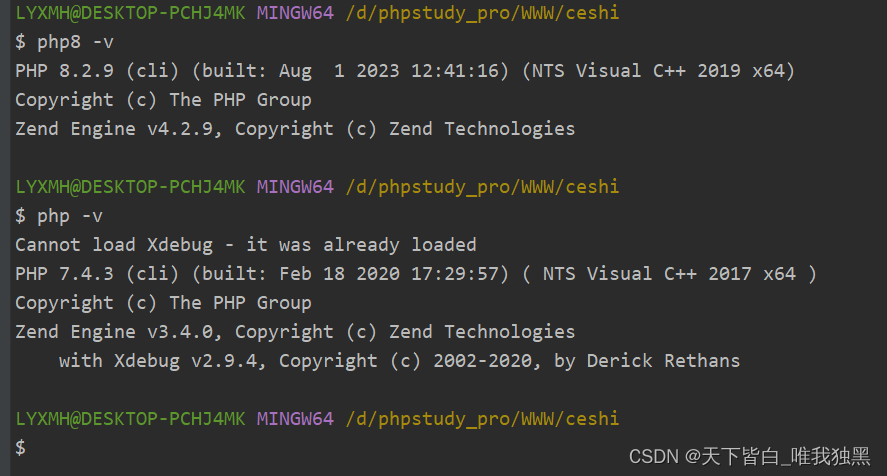初次学习爬虫,知识笔记小想
目录🌟
- 一、🍉基础知识
- 二、🍉http协议:
- 三、🍉解析网页
- (1) xpath的用法:
- (2) bs4解析器的解释:
- (3) python字符编码的错误:
- (4) 正则表达式:
- (5) 拓展知识
- 四、🍉Requests库
- (1) Requests
- (2) Response对象的属性
- (3) 理解Requests库的异常:
- (4) 请求数据 (** kwargs参数)
- 五、🍉网络爬虫的“盗亦有道”
- (1) 网络爬虫的尺寸
- (2) 网络爬虫引发的问题
- (3) 网络爬虫的限制
- (4) Robots协议
- (5) 对Robots协议的理解
- 六、🍉实战案例
- (1) 京东商品页面的爬取
- (2) 亚马逊商品页面的爬取
- (3) 百度360搜索关键词提交
- (4) 网络图片的爬取和存储
- (5) ip地址归属地的自动获取
- 七、🍉Beautiful Soup库入门
- (1) 标签基本元素
- (2) 标签树下的下行遍历
- (3) 标签树的上行遍历
- (4) 标签树的平衡遍历
- 八、🍉信息组织与提取方法
- (1) 信息标记的三种形式
- (2) 信息提取的一般方法
- (3) find_all()方法
- 九、🍉实例:中国大学排名爬虫
- (1) 程序的结构设计
- (2) 中文对齐的问题的原因
- 十、🍉正则表达式
- (1) 正则表达式的概述
- (2) 正则表达式的语法和使用
- (3) 正则表达式的常用操作符
- (4) re库主要功能函数
- 十一、🍉实例:淘宝商品信息定向爬虫
- (1) 功能描述
- (2) 程序的结构设计
- 十二、🍉实例:股票数据定向爬虫
- (1) 功能描述:
- (2) 程序的结构设计
- 十三、🍉网络爬虫框架
- (1) Scrapy爬虫框架结构
- 1. 爬虫框架
- 2. 5+2结构
- 3. requests库和scrapy库的比较
- 4. Scrapy 命令行:大部分操作都是通过命令行来实现
- (2) Scrapy爬虫基本使用
- 1. 步骤1:建立一个Scrapy爬虫工程
- 2. 步骤2:在工程中产生一个Scrapy爬虫
- 3. 步骤3:配置产生的spider 爬虫
- 4. 步骤4:运行爬虫,获取网页
- 5. `yield` 关键字【生成器】
- 6. Scrapy爬虫的数据类型
- (3) 实例:股票数据Scrapy实例
- 1. 步骤1:建立工程和Spider模板
- 2. 步骤2:编写Spider
- 3. 步骤3:编写Pipelines
- 4. 配置ITEM_PIPELINES选项
- 5. 配置并发连接选项
一、🍉基础知识
- 获取网页内容
- http请求: 学习requests库
- 方法:
- get方法:活得数据
- post方法:创建数据
- 方法:
- http请求: 学习requests库
- 解析网页内容
- 学习html网页结构
- 学习beautiful soup库:解析获取到的html内容,提取信息
- 储存或者分析数据
二、🍉http协议:
(1) http、Hypertext Transfer Protocol,超文本传输协议http是一个基于“请求与响应”模式的、无状态的应用层协议
(2)基本格式:
scheme://host[:post#]/path/……/[?query-string] [#anchor]
| 名称 | 解释 |
|---|---|
| scheme | 协议(例如:http,https,ftp) |
| host | 服务器的IP地址或者域名 |
| port# | 服务器的端口(如果是走协议默认端口,缺省端口80) |
| path | 访问资源的路径 |
| query-string | 参数,发送给http服务器的数据 |
| anchor | 锚(跳转到网页的指定锚点位置) |
- 当获取的网页代码出现乱码时,可能就是编码格式不一样,手动设置编码格式: 请内容 . encoding=’ 编码格式 ‘
- URL是通过HTTP协议存取资源的Internet路径,一个URL对应一个数据资源
三、🍉解析网页
(1) xpath的用法:
| 表达式 | 描述 | 用法 | 说明 |
|---|---|---|---|
| nodename | 选取此节点的所有子节点 | div | 选取div下的所有标签 |
| // | 从全局节点中选择节点,任意位置均可 | //div | 选取整个HTML页面的所有div标签 |
| / | 选取某个节点下 的节点 | //head/title | 选取head标签下的title标签 |
| @ | 选取某个属性的节点 | //div[@id] | 选取带有id属性的div标签 |
| . | 当前节点下 | ./span | 选取当节点下的span标签【代码中威力强大】 |
-
etree.HTML(内容):将不是html的格式的内容转换成html
-
etree.tostring(内容,encoding=‘UTF-8’).decode(‘UTF-8’):如果不是UTF-8编码格式的内容,这里可以更改成UTF-8的内容
-
etree.parse(文件路径):parse对html导入python并解析
-
自定解析器:
如果在浏览器上保存网页到本地,在python中获取.html文件需要利用自定解析器来解析文件内容
# 自定解析器
parser=etree.HTMLParser(encoding='UTF-8')
html=etree.parse(路径,parser=parser)
result=etree.tostring(html,encoding='UTF-8').decode('UTF-8')
xpath中的[1]表示第一个元素,而python中的第一个是从0开始,例如:[0]
(2) bs4解析器的解释:
| 解析器 | 使用方法 | 优势 | 劣势 |
|---|---|---|---|
| python标准库 | soup = BeautifulSoup(htmlt, ‘html.parser’) | python内置标准库;执行速度适中 | python2.x或者python3.2x前的版本中文文档容错能力差 |
| lxml HTML解析器 | soup = BeautifulSoup(html, ‘lxml’) | 速度快;文档容错能力强 | 需要安装c语言库 |
| lxml XML解析器 | soup = BeautifulSoup(html, ‘xml’) | 速度快;唯一支持XML的解析器 | 需要安装c语言库 |
| html5lib | soup = BeautifulSoup(html, ‘html5lib’) | 最好的容错性;以浏览器的方式解析文档;生成HTML5格式的文档;不依赖外部扩展库 | 速度慢 |
可以使用列表的强制转换:
(1)bs4的使用时,soup获取的时bs4的元素类型
(2)使用list强制转换
-
获取全部的单个标签:soup.find_all(‘标签’)
-
获取拥有指定属性的标签:
- soup.find_all(‘标签’,属性的键值对)
- soup.find_all(‘标签’,attrs={键值对1,键值对2}) attrs是存储的是字典,里面可以包含html的多个属性
-
获取多个指定属性的标签:
-
soup.find_all(‘标签’,属性的键值对1,属性的键值对2)
-
如果在获取时,出现python关键字与属性冲突时,在获取的时候添加一个下划线 ’ _ ’ ,例如:
soup.find_all('div',class_='position')
-
-
获取标签属性值:
方法1:通过下标方式提取
1.先锁定标签
alist=soup.find_all('a')
for a in alist:href=a['href']print(href)
方法2:利用attrs参数提取
for a in alist:href=a.attrs['href']print(href)
- 获取标签内的文本信息:使用string方法
# 获取html的所有div标签,从第二个开始
divs=soup.find_all('div')[1:]
# 利用循环输出每个标签
for div in divs:# 只提取标签下的字符串a=div.find_all('a')[0].string# 提取整个div下的字符串
divs=soup.find_all('div')[1:]
for div in divs:infos=list(div.stripped_strings) # stripped_strings方法是删除列表中的制表符,例如: "\n,\t"等
-
.get_text(strip=True):
去除文本内容的前后空白
(3) python字符编码的错误:
UnicodeDecodeError: ‘utf-8’ codec can’t decode byte 0xca in position 339: invalid continuation byte——错误的原因是,尝试将字节数据解码为UTF-8编码的字符串时,遇到了一个无效的起始字节。UTF-8是一种流行的Unicode字符编码,它使用1到4个字节表示不同的Unicode字符。如果字节数据不符合UTF-8编码规则,就会引发此错误。
解决方法:
-
尝试使用其他编码格式
-
使用错误处理策略
ignore是忽略无效字符content = response.content.decode('UTF-8',errors='ignore') -
尝试不同的编码方式
如果无法确定字节数据的正确编码方式,可以尝试使用不同的编码方式进行解码,直到找到一个可以成功解码的方式。可以使用try-except语句来捕获解码错误,并尝试不同的编码方式:
pythonCopy codedata = b'\xbc\xde\xcf\xbc'
encodings = ['utf-8', 'gbk', 'latin-1'] # 按照可能的编码方式顺序进行尝试
decoded_data = None
# 找到合适的编码
for encoding in encodings:try:decoded_data = data.decode(encoding)breakexcept UnicodeDecodeError:continue
# 如果找不到则为None
if decoded_data is None:print("无法解码字节数据")
else:print(decoded_data)
- 使用chardet库自动检测编码方式
如果无法确定字节数据的正确编码方式,可以使用chardet库来自动检测编码方式。chardet是一个第三方库,可以根据字节数据的特征自动检测编码方式。
安装库:
pythonCopy codepip install chardet
使用:
pythonCopy codeimport chardet
data = b'\xbc\xde\xcf\xbc'
result = chardet.detect(data)
encoding = result['encoding']
decoded_data = data.decode(encoding)
排错:
在Python爬虫中,即使代码看起来没有明显语法错误,爬取的数据仍然可能为空,这通常与以下因素有关:
-
目标网站结构改变:
- 如果爬虫是基于HTML结构编写的,而目标网站进行了改版或更新,原有的选择器(如XPath或CSS Selector)可能不再有效,导致找不到预期的数据。
-
动态加载内容:
- 网页上的数据可能是通过JavaScript动态加载的,直接爬取HTML源代码可能无法获取这些数据。此时需要分析网页加载逻辑,使用如Selenium、Pyppeteer等工具模拟浏览器行为,或者通过分析Ajax请求来间接获取数据。
-
反爬策略:
- 目标网站可能启用了反爬虫策略,比如Cookies验证、User-Agent限制、IP封锁、验证码、登录验证等。这时,需要针对这些策略进行相应的处理,比如设置更真实的User-Agent、使用代理IP池、处理验证码或模拟登录。
-
请求参数不正确:
- 请求头信息(headers)、cookies、POST数据等参数可能需要特殊配置才能获取数据,如果缺少必要参数或参数不正确,服务器可能不会返回有效数据。
-
网络问题:
- 即使代码看似没问题,网络连接不稳定或服务器端出现问题也可能导致无法获取数据。
-
解析逻辑错误:
- 数据解析环节可能出现问题,例如正则表达式匹配不正确,或者在解析HTML或JSON时引用了不存在的键或属性。
-
API调用权限或频率限制:
- 若爬取的是API接口,可能存在调用频率限制、API密钥失效或没有必要的授权。
-
数据缓存问题:
- 如果爬虫有缓存机制并且缓存了错误的结果,新的爬取可能会直接读取缓存而非从服务器获取新数据。
要解决这个问题,可以从以下几个步骤入手:
- 检查并确认请求网址是否正确且能够正常访问;
- 使用开发者工具查看网页加载过程,确认数据是如何加载和呈现的;
- 检查请求头和请求体是否符合目标网站的要求;
- 检查解析代码逻辑,特别是提取数据的部分;
- 检测网络状况以及是否有反爬措施,调整爬虫策略;
- 对于动态加载内容,确保相应脚本能够正确执行或模拟;
- 针对可能出现的API限制,合理安排请求间隔,遵循网站的使用协议。
(4) 正则表达式:
- 语法:reslut=re.match(‘匹配内容’,内容文件)
- 输出匹配:reslut.group()
"""正则表达式,又称规则表达式(Regular Expression),是使用单个字符串来描述、匹配某个句法规则的字符串,常被用来检索、替换那些符合某个模式(规则)的文本正则的三个基础方法import re1.1从头开始搜索,开头第一个如果不匹配则匹配不成功re.match(匹配规则, 被匹配字符串)1.2 搜索整个容器,匹配则成功,不匹配返回Nonere.search(匹配规则, 被匹配字符串)1.3 匹配整个字符串,找出全部匹配项re.findall(匹配规则, 被匹配字符串)1.4 字符串的 r 标记,表示当前字符串是原始字符串,即内部的转义字符无效而是普通字符1.5 数量匹配:(1)* :匹配前一个规则的字符出现0至无数次(2)+ :匹配前一个规则的字符出现1至无数次 就是至少有一次(3)? :匹配前一个规则的字符出现0次或者1次(4){m}:匹配前一个规则的字符出现m次(5){m,}:匹配前一个规则的字符出现最少m次(6){m,n}:匹配前一个规则的字符出现m到n次1.6 边界匹配(1)^ :匹配字符串开头(2)$ :匹配字符串结尾(3)\b :匹配一个单词的边界(4)\B :匹配非单词边界1.7 分组匹配(1)| :匹配左右任意一个表达式(2)() :将括号字符串作为一个分组
"""
import re
# 练习
s = " itheima1. @ @ python2 !!666 ##itcast3"
# 匹配 . 使用\.
re1=re.findall(r'\.',s)
print(re1)
# 自定义匹配字符 使用[ ]
re2=re.findall(r'[A-Z,\W]',s)
print(re2)
# 匹配整数 使用\d
re3=re.findall(r'\d',s)
print(re3)
# 匹配非数字 使用\D
re4=re.findall(r'\D',s)
print(re4)
# 匹配空格 和tab 使用 \s
re5=re.findall(r'\s',s)
print(re5)
# 匹配非空白 \S
re6=re.findall(r'\S',s)
print(re6)
# 匹配单字符 如:a-z A-Z 0—9 _\
re7=re.findall(r'\w',s)
print(re7)
# 匹配非单词字符 \W
re8=re.findall(r'\W',s)
print(re8)
# 匹配账号,只能由字母和数字组成,长度限制6到10位
# 规则为: ^[0-9a-zA-Z]{6, 10}$
# 匹配QQ号,要求纯数字,长度5-11,第一位不为0
# 规则为:^[1-9][0-9]{4, 10}&
# [1-9]匹配第一位,[0-9]匹配后面4到10位
(5) 拓展知识
- 爬取图片是不需要解码的
content=response.content
- 保存数据:wb是写入比特流数值
with open('路径','wb') as f:f.write(content)
四、🍉Requests库
Python123
学习流程图:

python的集成工具:
| 文本工具类IDE | 集成工具类IDE |
|---|---|
| IDLE | Pycharm |
| Notepad++ | Wing |
| Sublime Text | PyDev & Eclipse |
| Vim & Emacs | Visual Studio |
| Atom | Anaconda & Spyder |
| Komodo Edit | Canopy |
推荐使用的是:Sublime Text 、Wing 、Pycharm 、Anaconda (科学计算机和数据分析的专题)
(1) Requests
-
自动爬取HTML页面,自动网络请求提交
-
最常用的是get请求方法
| 方法 | 说明 |
|---|---|
| requests.request() | 构造一个请求,支撑以下各方法的基础方法 |
| requests.get() | 获取html网页的主要方法,对应于http的get |
| requests.head() | 获取html网页头信息的方法,对应于http的head |
| requests.post() | 向html网页提交post请求的方法,对应于http的post |
| requests.put() | 向html网页提交put请求的方法,对应于http的put |
| requests.patch() | 向html网页提交局部修改请求,对应于http的patch |
| requests.delete() | 向html页面提交删除请求,对应http的delete |
-
理解patch和put的区别
''' 假设url位置有一组数据UserInfo,包括UserID、UserName等20个字段 需求:用户修改了UserName,其他不变 - 采用patch,仅向url提交userName的局部更新请求 - 采用put,必须将所有20个字段一并提交到url,未提交字段被删除 patch的最主要好处:节省网络带宽 '''
(2) Response对象的属性
- 请求:获取html网页
| 属性 | 说明 |
|---|---|
| r.statu_code | http请求的返回状态,200表示连接成功,其他表示失败或者另有原因 |
| r.text | http响应内容的字符串形式,即,url对应的页面内容 |
| r.encoding | 从http header中猜测的响应内容编码方式 |
| r.apparent_encoding | 从内容中分析出的响应内容编码方式(备选编码方式) |
| r.content | http响应内容的二进制形式 |
(3) 理解Requests库的异常:
-
网络连接有风险
-
异常处理很重要
| 异常 | 说明 |
|---|---|
| requests.ConnectionError | 网络连接错位于异常,如DNS查询失败,拒绝连接等 |
| requests.HTTPError | http错误异常 |
| requests.URLRequired | url缺失异常 |
| requests.TooManyRedirects | 超过最大重定向次数,产生重定向异常 |
| requests.ConnectTimeout | 连接远程服务器超时异常 |
| requests.Timeout | 请求URL超时,产生超时异常 |
| r.raise_for_status() 【response】 | 如果不是200,产生异常requests.HTTPError |
- 使用try……except排错框架
import requestsdef getHTMLText(url):try:r=requests.get(url,timeout=30)# 如果状态不是200,引发HTTPError异常r.raise_for_status()r.encoding=r.apparent_encodingreturn r.textexcept:return "产生异常"if __name__ == "__mian__":url="http://www.baidu.com"print(getHTMLText(url))
(4) 请求数据 (** kwargs参数)
-
requests.request(method,url,** kwargs)
**kwargs:控制访问的参数,均为可选项method:请求方式
| 参数 | 说明 | |
|---|---|---|
| 1 | params | 跟在url连接后面,查询(搜索)的含义,字典或者字流格式 |
| 2 | data | 终点作为向服务器提供或提交资源时使用,字典、字节序列或文件对象,作为Request的内容 |
| 3 | json | JSON格式的数据,作为Request的内容 |
| 4 | headers | 字典、HTTP定制头 |
| 5 | cookies | 字典或CookieJar,Request中的cookie |
| 6 | auth | 元组,支持HTTP认证功能 |
| 7 | files | 字典类型,传输文件 |
| 8 | timeout | 设定超时时间,秒为单位 |
| 9 | poroxies | 字典类型,设定访问代理服务器,可以增加登录认证 |
| 10 | allow_redirects | True/False,默认为True,重定向开关 |
| 11 | stream | True/False,默认为True,获取内容立即下载开关 |
| 12 | verify | True/False,默认为True,认证SSL证书开关 |
| 13 | cert | 本地SSL证书路径 |
- params
import requests
url = "https://example.com/search"
params = {"query": "Python爬虫","page": 1
}
response = requests.get(url, params=params) # 最终得到url = https://example.com/search?query=Python爬虫&page=1
- data
import requests
url = "https://example.com/login"
# 相当于填写表单数据,如登录表单,post请求
data = {"username": "your_username","password": "your_password"
}
response = requests.post(url, data=data)
-
json
json参数的作用是简化向API发送JSON数据的过程,确保了数据的正确序列化和HTTP头部的恰当设置,非常适合与那些期望接收JSON输入的现代Web服务交互。
import requests
import json
url = "https://api.example.com/data"
data = {"key": "value","another_key": "another_value"
}
response = requests.post(url, json=data)
# 注意:requests库内部会自动将data转换为JSON字符串,
# 并设置Content-Type为application/json
# data是一个Python字典,通过json=data传递给requests.post方法后,requests会将其转换为JSON字符串{"key": "value", "another_key": "another_value"}并设置请求头,以表明发送的是JSON格式的数据。
-
headers
实际上是http头的相关域,它对应了向某一个url访问时所发起的http头字段,利用这个字段定制某个访问url的http的协议头
User-Agent: 指定客户端的信息,很多网站会根据这个字段判断访问者是浏览器还是爬虫,有时需要将其设置为常见的浏览器字符串来避免被识别为爬虫。Accept-Language: 指定客户端接受的语言种类,可以帮助获取特定语言的网页内容。Content-Type: 当发送POST请求且包含请求体时,这个字段指定了数据的格式,如application/x-www-form-urlencoded、application/json等。Authorization: 如果网站需要认证,可以通过这个字段提供Token或其他认证信息。
import requests url = "https://example.com" headers = {"User-Agent": "Mozilla/5.0 (Windows NT 10.0; Win64; x64) AppleWebKit/537.36 (KHTML, like Gecko) Chrome/58.0.3029.110 Safari/537.3","Accept-Language": "en-US,en;q=0.9,zh-CN;q=0.8,zh;q=0.7", } response = requests.get(url, headers=headers) # 模仿浏览器,请求数据 -
cookies
从http中解析cookies,它可以是字典,也可以是cookieJar形式;
解释:通过
cookies参数携带相应的cookie信息,可以使爬虫模拟已登录用户的行为,访问那些需要登录后才能查看的内容。这在爬取需要身份验证的网站数据时尤为重要。作用:
cookies参数在Python爬虫中的作用是模拟浏览器的cookie机制,帮助爬虫程序绕过登录限制,访问受保护的内容,或是维持与服务器的会话状态,提高数据抓取的准确性和效率。import requests url = "https://example.com/userinfo" cookies = {"sessionid": "abcdef123456","user": "example_user" } response = requests.get(url, cookies=cookies) -
auth
字段是一个元组类型,它是支持http认证功能的,
auth参数可以是一个元组,通常包含用户名和密码,或者是一个AuthBase的子类实例,用于自定义认证方案。# 基本HTTP认证 from requests.auth import HTTPBasicAuth url = "https://api.example.com/private" username = "your_username" password = "your_password" response = requests.get(url, auth=HTTPBasicAuth(username, password))# API密钥认证 class APITokenAuth(requests.auth.AuthBase):def __init__(self, token):self.token = tokendef __call__(self, r):r.headers['Authorization'] = f'Token {self.token}'return r url = "https://api.example.com/data" token = "your_api_token" response = requests.get(url, auth=APITokenAuth(token))# OAuth认证 对于支持OAuth的API,虽然直接通过auth参数处理可能较为复杂(通常需要先通过一系列步骤获取访问令牌),但也可以根据具体流程封装认证逻辑到自定义的AuthBase子类中。 通过合理使用auth参数,Python爬虫能够安全有效地访问那些需要认证的资源,确保了数据请求的合法性与安全性。 -
files
如何使用
files参数上传一个图片文件import requests url = "https://example.com/upload" file_path = "/path/to/your/image.jpg" with open(file_path, 'rb') as file:files = {'image': (file_path, file, 'image/jpeg')} # 文件名,文件对象,MIME类型response = requests.post(url, files=files) print(response.text)在这个例子中,我们首先打开要上传的图片文件,并以二进制模式读取(
'rb')。然后,我们将文件信息构造成一个字典,其中键'image'是服务器端预期接收文件的字段名,值是一个元组,包含文件名(这里也可以是任意字符串,服务器端可能会用作文件名)、文件对象和文件的MIME类型。最后,通过requests.post()方法发送POST请求,并将这个字典作为files参数传入。files参数的使用让Python爬虫能够执行涉及文件上传的任务,如图片上传、文件分享网站的数据抓取等场景。 -
timeout
用于设置网络请求的超时时间,如果一个请求超过指定的秒数还没有得到响应,
requests库将会抛出一个异常,而不是无限期地等待下去import requests url = "https://example.com" timeout = 5 # 设置超时时间为5秒 try:response = requests.get(url, timeout=timeout)# 处理响应数据 except requests.exceptions.Timeout:# 超时处理逻辑print("请求超时") # 请求https://example.com在5秒内没有得到服务器的响应,程序将不会一直等待,而是立即执行except块中的代码,打印出“请求超时”的信息 -
proxies
解释:
proxies参数用于配置HTTP或HTTPS代理服务器。代理服务器作为中间人,可以接收你的爬虫程序发出的网络请求,然后转发给目标服务器,并将响应结果再返回给你的爬虫。目的:
- 匿名性:隐藏真实IP地址,防止被目标网站识别和封锁,尤其是在进行大量请求时,减少被封禁的风险。
- 地域限制绕过:通过选择不同地区的代理服务器,可以访问地理位置受限的内容或服务,比如某些网站仅对特定国家或地区开放。
- 性能优化:如果目标服务器对你的物理位置响应较慢,使用地理位置更近的代理服务器可以加快访问速度。
- 负载均衡和带宽管理:企业级应用中,可能会利用代理服务器来分配请求,优化网络资源使用。
import requests proxies = {"http": "http://代理服务器地址:端口","https": "https://代理服务器地址:端口", } response = requests.get("http://example.com", proxies=proxies)代码解释:
proxies参数是一个字典,其中键为协议名(“http” 或 “https”),值为代理服务器的URL(包括协议、地址和端口)。这样,所有通过requests发起的请求都会通过指定的代理服务器进行。注意:使用代理时应遵守目标网站的使用条款和服务协议,合法合规地进行数据抓取,尊重网站的Robots协议,并尽量减少对目标服务器的负担。同时,选择稳定可靠的代理服务对于爬虫的成功运行至关重要。
-
allow_redirects
requests库会自动处理重定向,即自动向新的URL发送请求。当设置为False时,则不自动处理重定向,而是直接返回原始的重定向响应。
import requests
# 允许重定向
response = requests.get('http://example.com/redirect', allow_redirects=True)
print(response.url) # 最终重定向后的URL
# 禁止重定向
response = requests.get('http://example.com/redirect', allow_redirects=False)
print(response.status_code) # 可能会得到一个重定向的状态码,如301或302
print(response.headers['location']) # 获取重定向的目标URL,而不是自动访问
-
stream
- 解释:在使用Python的
requests库进行网络请求时,stream参数是一个非常实用的选项,它的主要作用是控制是否立即下载响应内容。当设置stream=True时,requests不会立即下载整个响应体,而是等到你需要时才按需读取,这对于大文件下载或者仅需处理部分响应内容的场景非常有用 stream参数的作用:- 节省内存:对于大型文件的下载,如果直接下载整个响应体到内存中,可能会消耗大量内存资源。使用
stream=True可以让数据边下载边处理,减少内存占用。 - 按需读取:当你只想读取响应的一部分内容,而不是全部时,使用流式处理可以更加高效。例如,你可能只需要检查响应的前几行来决定是否继续下载剩余内容。
- 长时间运行的连接:在某些情况下,保持连接打开并逐步处理响应内容是有益的,比如实时数据流处理。
- 节省内存:对于大型文件的下载,如果直接下载整个响应体到内存中,可能会消耗大量内存资源。使用
import requests url = "http://example.com/large_file.zip" response = requests.get(url, stream=True) # 检查请求是否成功 if response.status_code == 200:# 打开一个本地文件用于保存下载的内容with open('large_file.zip', 'wb') as f:for chunk in response.iter_content(chunk_size=1024): # 如果chunk不是空的,才写入文件if chunk: f.write(chunk) - 解释:在使用Python的
-
verify
verify=True,这意味着requests会验证服务器的SSL证书,确保与之建立的HTTPS连接是安全的,可以防止中间人攻击。- 有时候你可能需要关闭这个验证,比如在测试环境中,或者当遇到自签名证书(self-signed certificate)或证书链不完整的情况,这时可以将
verify设置为False。不过,这样做会降低安全性,应该谨慎考虑,并仅在确信不会导致安全问题的情况下使用。
import requests url = "https://example.com" response = requests.get(url, verify=False) -
cert
cert参数可以接收一个表示客户端证书文件路径的字符串,或者一个包含证书文件路径和私钥文件路径的元组。cert参数用于指定HTTPS请求时的客户端证书。当目标网站或API需要客户端提供安全证书进行身份验证时,就需要用到这个参数。这对于访问那些启用了客户端证书认证的HTTPS服务尤为重要,比如一些内部系统、银行接口或是高度安全的API。
import requests url = "https://example.com/api/secure-endpoint" cert = "/path/to/client.pem" # 单个文件包含证书和私钥 # 或者,如果证书和私钥分开: # cert = ("/path/to/cert.pem", "/path/to/key.pem") response = requests.get(url, cert=cert)
五、🍉网络爬虫的“盗亦有道”
(1) 网络爬虫的尺寸
| 1 | 2 | 3 |
|---|---|---|
| 小规模,数据量爬取速度不敏感Requests库 >90% | 中规模,数据规模较大爬取速度敏感Scrapy库 | 大规模,搜索引擎爬取速度关键定制开发 |
| 爬取网页 玩转网页 | 爬取网站 爬取系列网站 | 爬取全网 |
(2) 网络爬虫引发的问题
-
骚扰问题
网络爬虫的“性能骚扰”:web服务器默认接收人类访问。受限于编写水平和目的,网络爬虫将会为Web服务带来巨大的资源开销
-
法律风险
服务器上的数据有产权归属,网络爬虫获取数据后牟利将带来法律风险
-
隐私泄露
网络爬虫可能具备突破简单访问控制的能力,获得被保护数据从而泄露个人隐私
(3) 网络爬虫的限制
- 来源审查:判断User-Agent进行限制
- 检查来访Http协议头的User-Agent域,只响应浏览器或友好爬虫的访问
- 发布公告:Robots协议
- 告知所有爬虫网站的爬取策略,要求爬虫遵守
(4) Robots协议
-
Robots(Robots Exclusion Standard,网络爬虫排除标准协议)是机器人的意思。robots协议是放在网站的根目录上的,如果一个网站无robots协议,则是该网站允许所有爬虫爬取该网站,所有的爬虫都要遵循robots协议。
-
作用:网站告知网络爬虫哪些页面可以抓取,哪些不行
-
形式:在网站根目录下的robots.txt文件
-
robots协议基本语法:
# disallow:表示不允许爬取的内容
# *代表所有,/代表根目录
- Robots协议的使用
- 网络爬虫:自动或人工识别robots.txt,再进行内容爬取。
- 约束性:Robots协议是建议但非约束性,网络爬虫可以不遵守,但存在法律风险。
(5) 对Robots协议的理解
| 1 | 2 | 3 |
|---|---|---|
| 访问量很小:可以遵守 ; 访问量较大:建议遵守 | 非商业且偶尔:建议遵守 ; 商业利益:必须遵守 | 必须遵守 |
| 爬取网页 玩转网页 | 爬取网站 爬取系列网站 | 爬取全网 |
例如:
http://www.baidu.com/robots.txt
http://www.news,sina.com.cn/robots.txt
http://www.qq.com/robots.txt
http://news.qq.com/robots.txt
http://www.moe.edu.cn/robots.txt (无robots协议)
六、🍉实战案例
(1) 京东商品页面的爬取
import requests
url="https://item.jd.com/100077414769.html"
try:r=requests.get(url)r.raise_for_status() # 如果状态码是200则正常运行r.encoding=r.apparent_encodingprint(r.text[:1000])
except:print("爬取失败")
(2) 亚马逊商品页面的爬取
import requestsurl="https://www.amazon.cn/gp/product/B01M8L5Z3Y"
headers={"User-Agent":"Mozilla/5.0 (Windows NT 10.0; Win64; x64) AppleWebKit/537.36 (KHTML, like Gecko) Chrome/124.0.0.0 Safari/537.36"
}
try:r=requests.get(url,headers=headers)r.raise_for_status() # 如果状态码是200则正常运行r.encoding=r.apparent_encodingprint(r.text)
except:print("爬取失败")
(3) 百度360搜索关键词提交
- 百度的关键词接口:
http://www.baidu.com/s?wd=keyword
import requestsurl="http://www.baidu.com/s"
try:kv={'wd':'Python'}r=requests.get(url,params=kv)print(r.request.url)r.raise_for_status() # 如果状态码是200则正常运行print(r.request.url)print(r.text)
except:print("爬取失败")
- 360的关键词接口
http://www.so.com/s?q=keyword
import requestsurl="http://www.so.com/s"
try:kv={'q':'Python'}r=requests.get(url,params=kv)print(r.request.url)r.raise_for_status() # 如果状态码是200则正常运行print(r.text)
except:print("爬取失败")
(4) 网络图片的爬取和存储
import requests
import os
url="http://image.nationalgeograhic.com.cn/2017/20170211061910157.jpg"
root="F://music//"
path = root +url.split('/')[-1]
try:if not os.path.exists(root):os.mkdir(root)if not os.path.exists(path):r= requests.get(url)with open(path,"wb") as f:f.write(r.content)f.close()print("文件保存成功")else:print("文件已存在")
except:print("爬取失败")
(5) ip地址归属地的自动获取
import requestsurl="http://m.ip138.com/ip.asp?ip="
try:r=requests.get(url+'202.204.80.112')r.raise_for_status()r.encoding=r.apparent_encodingprint(r.text[-500:])
except:print("爬取失败")
七、🍉Beautiful Soup库入门
(1) 标签基本元素
| 基本元素 | 说明 |
|---|---|
| Tag | 标签,最基本的信息组织单元,分别用<>和</>标明开头和结尾 |
| Name | 标签的名字, …… 的名字是‘p’,格式:.name |
| Attributes | 标签的属性,字典形式组织,格式:.attrs |
| NavigableString | 标签内非属性字符串,<>……</>中字符串,格式:.string |
| Comment | 标签内字符串的注释部分,一种特殊的Comment类型 |
-
最基本的信息单元
import requests from bs4 import BeautifulSoup url="http://python123.io/ws/demo.html" try:response=requests.get(url)response.raise_for_status()html=response.textsoup=BeautifulSoup(html,"html.parser")title=soup.titlea=soup.aprint(title,a) except:print("爬取失败") -
标签的名字
import requests from bs4 import BeautifulSoup url="http://python123.io/ws/demo.html" try:response=requests.get(url)response.raise_for_status()html=response.textsoup=BeautifulSoup(html,"html.parser")title=soup.title.name # 获取标签的尖括号里面的内容print(title) except:print("爬取失败") -
标签属性
import requests from bs4 import BeautifulSoup url="http://python123.io/ws/demo.html" try:response=requests.get(url)response.raise_for_status()html=response.textsoup=BeautifulSoup(html,"html.parser")a=soup.aid=a.attrs # 查看a标签里的属性id_class=a.attrs['href'] # 获取属性的键值对,就是属性内容print(id_class) except:print("爬取失败") -
标签内非属性字符串
import requests from bs4 import BeautifulSoup url="http://python123.io/ws/demo.html" try:response=requests.get(url)response.raise_for_status()html=response.textsoup=BeautifulSoup(html,"html.parser")p=soup.p.stringprint(p) except:print("爬取失败") -
标签内字符串的注释部分
from bs4 import BeautifulSoupsoup=BeautifulSoup("<b><!--This is a comment--></b><p>This is not a comment</p>","html.parser")print(type(soup.b.string)) except:print("爬取失败")
(2) 标签树下的下行遍历
| 属性 | 说明 |
|---|---|
| .contents | 子节点的列表,将所有儿子节点存入列表 |
| .children | 子节点的迭代类型,与.contents类似,用于循环遍历儿子节点 |
| .descendants | 子孙节点的迭代类型,包含所有子孙节点,用于循环遍历 |
-
遍历下行
import requests from bs4 import BeautifulSoup url="http://python123.io/ws/demo.html" response=requests.get(url) soup=BeautifulSoup(response.text,"html.parser") head=soup.head.contents body=soup.body.contents print(head) print(body) -
遍历下行
import requests from bs4 import BeautifulSoup url="http://python123.io/ws/demo.html" response=requests.get(url) soup=BeautifulSoup(response.text,"html.parser") # 遍历儿子节点 for child in soup.body.children:print(child) # 遍历子孙节点 for child in soup.body.descendants:print(child)
(3) 标签树的上行遍历
| 属性 | 说明 |
|---|---|
| .parent | 节点的父亲标签 |
| .parents | 节点先辈标签的迭代类型,用于循环遍历辈点 |
import requests
from bs4 import BeautifulSoup
url="http://python123.io/ws/demo.html"
response=requests.get(url)
soup=BeautifulSoup(response.text,"html.parser")
title=soup.title.parent
print(title)
for parent in soup.a.parents:if parent is None:print(parent)else:print(parent.name)
(4) 标签树的平衡遍历
| 属性 | 说明 |
|---|---|
| .next_sibling | 返回按照HTML文本顺序的下一个平行节点标签 |
| .previous_sibling | 返回按照HTML文本顺序的上一个平行节点标签 |
| .next_siblings | 迭代类型,返回按照HTML文本顺序的后续所有平行节点标签 |
| .previous_siblings | 迭代类型,返回按照HTML文本顺序的前续所有平行节点标签 |
import requests
from bs4 import BeautifulSoup
url="http://python123.io/ws/demo.html"
response=requests.get(url)
soup=BeautifulSoup(response.text,"html.parser")
a0=soup.a.next_sibling
print(a0)
a1=soup.a.next_sibling.next_sibling
print(a1)
a2=soup.a.previous_sibling
print(a2)
a3=soup.a.previous_sibling.previous_sibling
print(a3)
a4=soup.a.parent
print(a4)
# 遍历后续节点
for sibling in soup.a.next_sibling:print(sibling)
# 遍历前续节点
for sibling in soup.a.previous_sibling:print(sibling)
-
.prettify()为HTML文本<>及其内容增加更加”\n“
-
.prettofuy()可用与标签,方法:.prettift()
import requests
from bs4 import BeautifulSoup
url="http://python123.io/ws/demo.html"
response=requests.get(url)
soup=BeautifulSoup(response.text,"html.parser")
print(soup.prettify())
八、🍉信息组织与提取方法
(1) 信息标记的三种形式
json
"key":"value"
"key":["value1","value2"]
"key":{"subkey":"subvalue"}
- 信息有类型,适合程序处理(js),较XML简洁
- 移动应用云端和节点的信息通信,无注释
yaml
key:vlaue
key:#Comment
-vlaue1
-vlaue2
key:subkey:subvlaue
- 信息无类型,文本信息比例最高,可读性好
- 各类系统的配置文件,有注释易读
xml
<name>……</name>
注释:<!-- -->
- 最早的通用信息标记语言,可扩展性好,但繁琐。
- Internet上的信息交互与传递
(2) 信息提取的一般方法
-
方法一:
完整解析信息的标记形式,再提取关键信息。XML、JSON、YAML ,需要标记解析器;
优点:信息解析准确;缺点:提取过程繁琐,速度慢。
-
方法二:
无视标记形式,直接搜索关键信息。对信息的文本查找函数即可。
优点:提取过程简洁,速度较快。缺点:提取结果准确性与信息内容相关
-
融合方法:
结合形式解析与搜索方法,提取关键信息。XML、JSON、YAML、搜索。需要标记解析器及文本查找函数。
(3) find_all()方法
<>.find_all(name,attrs,recursive,string,**kwargs)
"""
返回一个列表类型,存储查找的结果
name:对标签名称的检索字符串
attrs:对标签属性值的检索字符串,可标注属性检索
recursive:是否对子孙全部检索,默认True
string:<>……</>中字符串区域的检索字符串
"""
- name:
import requests
from bs4 import BeautifulSoup
r=requests.get("http://python123.io/ws/demo.html").text
soup=BeautifulSoup(r,"html.parser")
# 单个标签查找
a=soup.find_all('a')
# 多个标签查找用列表
b=soup.find_all(['a','b'])
import requests
from bs4 import BeautifulSoup
r=requests.get("http://python123.io/ws/demo.html").text
soup=BeautifulSoup(r,"html.parser")
for tag in soup.find_all(True):print(tag.name)# 返回结果
"""
html
head
title
body
p
b
p
a
a
"""
- attrs
import requests
from bs4 import BeautifulSoup
r=requests.get("http://python123.io/ws/demo.html").text
soup=BeautifulSoup(r,"html.parser")
# 属性的查找
link1=soup.find_all(id=['link1','class'])
print(link1)
p=soup.find_all('p','course')
print(p)
import requests
from bs4 import BeautifulSoup
import re
r=requests.get("http://python123.io/ws/demo.html").text
soup=BeautifulSoup(r,"html.parser")
# 利用正则表达式的函数compile搜索属性单词搜索
link=soup.find_all(id=re.compile('lin'))
print(link)
- recursive
import requests
from bs4 import BeautifulSoup
import re
r=requests.get("http://python123.io/ws/demo.html").text
soup=BeautifulSoup(r,"html.parser")
# 是否对子孙全部检索
a=soup.find_all('a',recursive=False)
print(a)
- string
import requests
from bs4 import BeautifulSoup
import re
r=requests.get("http://python123.io/ws/demo.html").text
soup=BeautifulSoup(r,"html.parser")
# 搜索字符串
str=soup.find_all(string='Basic Python')
print(str)
# 利用正则表达式搜索关键词
python=soup.find_all(string=re.compile('py'))
print(python)
- 拓展:
| 方法 | 说明 |
|---|---|
| <>.find() | 搜索且只返回一个结果,字符串类型,同.find_all参数 |
| <>.find_parents() | 在先辈节点中搜索,返回列表类型,同.find_all参数 |
| <>.find_parent() | 在先辈节点中返回一个结果,字符串类型,同.find_all参数 |
| <>.find_next_siblings() | 在后续平行节点中搜索,返回列表类型,同.find_all参数 |
| <>.find_next_sibling() | 在后续平行节点中返回一个结果,字符串类型,同.find_all参数 |
| <>.find_previous_siblings() | 在前序平行节点中搜索,返回列表类型,同.find_all参数 |
| <>.find_previous_sibling() | 在前序平行节点中返回一个结果,字符串类型,同.find_all参数 |
提取属性的方法:
import requests
from bs4 import BeautifulSoup
r=requests.get("http://python123.io/ws/demo.html").text
soup=BeautifulSoup(r,"html.parser")
for link in soup.find_all('a'):"""提取属性的三种方法"""print(link['href'])print(link.get('href'))print(link.attrs['href'])
特:soup(…) 等价于 soup.find_all(…)
九、🍉实例:中国大学排名爬虫
(1) 程序的结构设计
- 步骤1:从网络上获取大学排名网页内容——getHTMLText()
- 步骤2:提取网页内容中信息到合适的数据结构——fillUnivList()
- 步骤3:利用数据结构展示并输出结果——printUnivList()
【软科排名】2024年最新软科中国大学排名|中国最好大学排名 (shanghairanking.cn)
(2) 中文对齐的问题的原因

| : | <填充> | <对齐> | <宽度> | , | <.精度> | <类型> |
|---|---|---|---|---|---|---|
| 引导符号 | 用于填充的单个字符 | <左对齐 ;> 右对齐;^剧中对齐 | 槽的设定输出宽度 | 数字的千位分隔符,适用于整数和浮点数 | 浮点数小数部分的精度或字符串的最大输出长度 | 整数类型b,c,d,o,x,X浮点数类型e,E,f,% |
- 中文对齐问题的解决:当中文字符宽度不够时,采用西文字符填充;中西文字符占用宽度不同,采用中文字符的空格填充
chr(12288).
代码块:Python网络爬虫与信息提取_中国大学MOOC(慕课) (icourse163.org)
import bs4
import requests
from bs4 import BeautifulSoup
import redef getHTMLText(url):try:r=requests.get(url,timeout=30)r.raise_for_status()r.encoding=r.apparent_encodingreturn r.textexcept:return "网页信息爬取错误"def fillUnivList(ulist, html):soup = BeautifulSoup(html, "html.parser")for tr in soup.find_all('tbody').children:# 检测tr标签的类型的类型,如果tr标签的类型不是bs4库定义的tag类型,将过滤掉if isinstance(tr,bs4.element.Tag):tds=tr('td')ulist.append([tds[0].string,tds[1].string,tds[2].string])def printUnivList(ulist, num):tplt="{0:10}\t{1:{3}^10}\t{2:^10}"print("{:10}\t{:^6}\t{:^10}".format("排名","学校名称","总分"))for i in range(num):u=ulist[i]print(tplt.format(u[0],u[1],u[2],chr(12288)))def main():uinfo=[]url=""html=getHTMLText(url)fillUnivList(uinfo,html)printUnivList(uinfo,20)十、🍉正则表达式
(1) 正则表达式的概述
- 通用的字符串表达框架
- 简洁表达一组字符串的表达式
- 针对字符串表达“简洁”和“特征”思想的工具
- 判断某字符串的特征归属
正则表达式在文本处理中十分常用
- 表达式文本类型的特征(病毒、入侵等)
- 同时查找或替换一组字符串
- 匹配字符串的全部或部分
(2) 正则表达式的语法和使用
-
语法:
正则表达式语法由字符和操作符构成
P(Y|YT|YTH|YTHO)?N
-
使用
编译:将符合正则表达式语法的字符串转换成正则表达式特征。

(3) 正则表达式的常用操作符
| 操作符 | 说明 | 实例 |
|---|---|---|
| . | 表示任何单个字符,除”\n“以外 | |
| [ ] | 字符集,对单个字符给出取值范围 | [abc]表示a、b、c,[a-z]表示a到z单个字符 |
| [^ ] | 非字符集,对单个字符给出排除范围 | [^abc]表示非a或b或c的单个字符 |
| * | 前一个字符0次或无限次扩展 | abc*表示ab、abc、abcc、abcc等 |
| + | 前一个字符1次或无限次扩展 | abc+表示abc、abcc、abccc等 |
| ? | 前一个字符0次或1次扩展 | abc?表示av、abc |
| | | 左右表达式任意一个 | abc|def表示abc、def |
| {m} | 扩展前一个字符m次 | ab{2}c表示abbc |
| {m,n} | 扩展前一个字符m至n次(含n) | ab{1,2}c表示abc、abbc |
| ^ | 匹配字符串开头 | ^abc表示abc且在一个字符串的开头 |
| $ | 匹配字符串结尾 | abc$表示abc且在一个字符串的结尾 |
| () | 分组标记,内部只能使用|操作符 | (abc)表示abc,(abc|def)表示abc、def |
| \d | 数字,等价于[0-9] | |
| \w | 单词字符,等价于[A-Za-z0-9] |
(4) re库主要功能函数
| 函数 | 说明 |
|---|---|
| re.search(pattern, string) | 在一个字符串中搜索匹配正则表达式的第一个位置,返回match对象 |
| re.match(pattern, string) | 从一个字符串的开始位置起匹配正则表达式,返回match对象 |
| re.findall(pattern, string) | 搜索字符串,以列表类型返回全部能匹配的子串 |
| re.split(pattern, string) | 将一个字符串按照正则表达式匹配结果进行分割,返回列表类型 |
| re.finditer(pattern, string) | 搜索字符串,返回一个匹配结果的迭代类型,每个迭代元素是match对象 |
| re.sub(pattern, string) | 在一个字符串中替换所有匹配正则表达式的字串,返回替换后的字符串 |
| re.compile(pattern[, flags]) | |
| re.escape(string) |
re模块中常用函数的简单介绍:
语法:
re.函数(pattern, string,flags=0)
- pattern:正则表达式的字符串或原生字符串表示
- string:待匹配字符串
- flags:正则表达式使用时的控制标记
-
re.search(pattern, string,flags=0):
在字符串中搜索匹配正则表达式pattern的第一个位置,返回一个匹配对象,如果没有找到匹配的,则返回None。import re match = re.search(r'\d+', 'hello 123 world') if match:print('找到匹配:', match.group()) else:print('未找到匹配') -
re.match(pattern, string,flags=0):
从字符串的起始位置匹配正则表达式pattern,如果起始位置没有匹配到,则返回None。注意这与search()不同,search()会扫描整个字符串以查找匹配项。match = re.match(r'\d+', '123 hello world') if match:print('找到匹配:', match.group()) else:print('未找到匹配') -
re.findall(pattern, string):
返回字符串中所有与正则表达式pattern相匹配的所有非重叠匹配项的列表。如果未找到匹配项,则返回空列表。matches = re.findall(r'\b\w+\b', 'Hello World! This is a test.') print(matches) # 输出:['Hello', 'World', 'This', 'is', 'a', 'test'] -
re.sub(pattern, repl, string, count=0, flags):
将字符串中所有与正则表达式pattern匹配的部分替换为repl,并返回修改后的字符串。count参数可以指定替换的最大次数,默认为0,表示替换所有匹配项。result = re.sub(r'\d+', 'NUMBER', 'hello 123 world 456') print(result) # 输出:'hello NUMBER world NUMBER' -
re.compile(pattern[, flags]):
编译正则表达式字符串为一个正则表达式对象,这样可以提高使用相同模式进行多次匹配的效率。pattern = re.compile(r'\d+') match = pattern.match('123 hello') if match:print('找到匹配:', match.group()) -
re.escape(string):
转义字符串中的特殊字符,使得它们在正则表达式中作为字面值字符对待。pattern = re.compile(re.escape('[') + r'\d+' + re.escape(']')) match = pattern.search('[123]') if match:print('找到匹配:', match.group()) -
re.split(pattern,string,maxsplit=0,flags=0):
将一个字符串按照正则表达式匹配进行分割返回列表类型
- maxsplit:最大分割数,剩余部分作为最后一个元素输出
import re result1=re.split(r'[1-9]\d{5}','BIT100081 TSU100084') print(result1) result2=re.split(r'[1-9]\d{5}','BIT100081 TSU100084',maxsplit=1) print(result2) -
re.finditer(pattern, string):
搜索字符串,返回一个匹配结果的迭代类型,每个迭代元素是,match对象
import re for m in re.finditer(r'[1-9]\d{5}','BIT100081 TSU100084'):if m:print(m.group(0))
拓展:
- re库的另一种等价用法:
# 第一种 函数式用法:一次性操作
rst=re.search(r'[1-9]\d{5}','BIT 100081')
# 第二种 面对对象用法:编译后的多次操作
pat=ree.compile(r'[1-9]\d{5}')
rst=pat.search('BIT 100081')
-
match对象介绍
Match对象一次匹配的结果,包含匹配的很多信息
import re match=re.search(r'[1-9]\d{5}','BIT 100081') if match:print(match.group(0))print(type(match))match对象的属性:
属性 说明 .string 待匹配的文本 .re 匹配时使用的patter对象(正则表达式) .pos 正则表达式搜索文本的开始位置 .endpos 正则表达式搜索文本的结束位置 match对象的方法:
方法 说明 .group(0) 获得匹配的字符串 .start() 匹配字符串在原始字符串的开始位置 .end() 匹配字符串在原始字符串的结束位置 .span() 返回(.start(),.end()) import re match=re.search(r'[1-9]\d{5}','BIT100081 TSU100084') print(match.string) print(match.re) print(match.pos) print(match.endpos) print(match.group(0)) print(match.start()) print(match.end()) print(match.span()) -
贪婪匹配
Re默认采用贪婪匹配,即输出匹配最长的字串
import re match=re.search(r'PY.*N','PYANBNCNDN') print(match.group(0))最小匹配:如何输出最短的子串呢?
import re match=re.search(r'PY.*?N','PYANBNCNDN') print(match.group(0))最小匹配操作符
操作符 说明 *? 前一个字符0次或无限次扩展,最小匹配 +? 前一个字符1次或无限次扩展,最小匹配 ?? 前一个字符0次或1次扩展,最小匹配 {m,n}? 扩展前一个字符m至n次(含n),最小匹配 -
典型例子:
在Python中,可以使用
re模块(正则表达式模块)来匹配IP地址。一个基本的IPv4地址由四个0到255之间的数字组成,每部分之间用点(“.”)分隔。下面是一个简单的例子,展示了如何编写一个正则表达式来匹配这样的IP地址:
import redef is_valid_ip(ip):# 定义IP地址的正则表达式ip_pattern = re.compile(r'^((25[0-5]|2[0-4][0-9]|[01]?[0-9][0-9]?)\.){3}(25[0-5]|2[0-4][0-9]|[01]?[0-9][0-9]?)$')# 使用正则表达式匹配IP地址if ip_pattern.match(ip):return Trueelse:return Falseif __name__ == '__main__':# 测试函数ips = ["192.168.1.1", "255.255.255.255", "123.456.789.0", "1.2.3"]for ip in ips:print(f"{ip}: {is_valid_ip(ip)}")
这段代码首先导入了re模块,并定义了一个函数is_valid_ip,该函数使用一个正则表达式来检查输入的字符串是否符合IPv4地址的格式。正则表达式的详细解释如下:
^:表示字符串的开始。((25[0-5]|2[0-4][0-9]|[01]?[0-9][0-9]?)\.){3}:这部分匹配前三部分的数字,每部分数字范围是0到255,后面跟着一个点(“.”)。其中,25[0-5]匹配从250到255的数字,2[0-4][0-9]匹配从200到249的数字,[01]?[0-9][0-9]?匹配0到199的数字,包括前导零的情况。\.表示匹配点字符本身(因为点在正则表达式中有特殊含义,所以需要用反斜杠转义)。
(25[0-5]|2[0-4][0-9]|[01]?[0-9][0-9]?)$:这部分匹配第四部分的数字,后面跟上字符串的结束标志$。
经典正则表达式实例:
| 表达式 | 解释 |
|---|---|
| ^ [A-Z a-z]+$ | 由26个字母组成的字符串 |
| ^ [A-Z a-Z 0-9]+$ | 由26个字母和数字组成的字符串 |
| ^-?\d+$ | 整数形式的字符串 |
| ^ [0-9] * [1-9] [0-9] * $ | 正整数形式的字符串 |
| [1-9] \d{5} | 中国境内邮政编码,6位 |
| [\u 4e00-\u9fa5] | 匹配中文字符 |
| \d {3}-d{8}|\d{4}-\d{7} | 国内电话号码,010-68913536 |
十一、🍉实例:淘宝商品信息定向爬虫
(1) 功能描述
- 目标:获取淘宝搜索页面的信息,提取其中的商品名称和价格
- 理解:淘宝的搜索接口、翻页的处理
- 技术路线:requests-re
(2) 程序的结构设计
步骤1:提交商品搜索请求,循坏获取页面。
https://s.taobao.com/search?initiative_id=staobaoz_20240525&page=1&q=%E4%B9%A6%E5%8C%85&tab=all
https://s.taobao.com/search?initiative_id=staobaoz_20240525&page=2&q=%E4%B9%A6%E5%8C%85&tab=all
https://s.taobao.com/search?initiative_id=staobaoz_20240525&page=3&q=%E4%B9%A6%E5%8C%85&tab=all
https://s.taobao.com/search?page=2&q=%E4%B9%A6%E5%8C%85&tab=all
https://s.taobao.com/search?page=1&q=%E4%B9%A6%E5%8C%85&tab=all
https://s.taobao.com/search?page=3&q=%E4%B9%A6%E5%8C%85&tab=all
步骤2:对于每个页面,提取商品名称和价格信息
步骤3:将信息输出到屏幕上。
代码块:
#CrowTaobaoPrice.py
import requests
import redef getHTMLText(url):try:r = requests.get(url, timeout=30)r.raise_for_status()r.encoding = r.apparent_encodingreturn r.textexcept:return ""def parsePage(ilt, html):try:plt = re.findall(r'\"view_price\"\:\"[\d\.]*\"',html)tlt = re.findall(r'\"raw_title\"\:\".*?\"',html)for i in range(len(plt)):price = eval(plt[i].split(':')[1])title = eval(tlt[i].split(':')[1])ilt.append([price , title])except:print("")def printGoodsList(ilt):tplt = "{:4}\t{:8}\t{:16}"print(tplt.format("序号", "价格", "商品名称"))count = 0for g in ilt:count = count + 1print(tplt.format(count, g[0], g[1]))def main():goods = '书包'depth = 3start_url = 'https://s.taobao.com/search?q=' + goodsinfoList = []for i in range(depth):try:url = start_url + '&s=' + str(44*i)html = getHTMLText(url)parsePage(infoList, html)except:continueprintGoodsList(infoList)main()
十二、🍉实例:股票数据定向爬虫
(1) 功能描述:
- 目标:获取上交所和深交所所有股票的名称和交易信息
- 输出:保存到文件中
- 技术路线:requests-bs4-re
候选数据网站的选择
新浪股票:http://finance.sina.com.cn/stock/
百度股票:https://gupiao.baidu.com/stock/
- 选取原则:股票信息静态存在于HTML页面中,非js代码生成,没有Robots协议限制。
- 选取方法:浏览器F12,源代码查看等。
- 选取心态:不要纠结于某个网络,多找信息源,选择尝试
(2) 程序的结构设计
东方财富网:http://quote.eastmoney.com/stocklist.html
百度股票:https://gupiao.baidu.com/stock/
单个股票:https://gupiao.baidu.com/stock/sz002439.html
-
步骤1:从东方财富网获取股票列表
步骤2:根据股票列表逐个到百度股票获取个股信息
-
步骤3:将结果存储到文件
代码块:
#CrawBaiduStocksB.py
import requests
from bs4 import BeautifulSoup
import traceback
import redef getHTMLText(url, code="utf-8"):try:r = requests.get(url)r.raise_for_status()r.encoding = codereturn r.textexcept:return ""def getStockList(lst, stockURL):html = getHTMLText(stockURL, "GB2312")soup = BeautifulSoup(html, 'html.parser') a = soup.find_all('a')for i in a:try:href = i.attrs['href']lst.append(re.findall(r"[s][hz]\d{6}", href)[0])except:continuedef getStockInfo(lst, stockURL, fpath):count = 0for stock in lst:url = stockURL + stock + ".html"html = getHTMLText(url)try:if html=="":continueinfoDict = {}soup = BeautifulSoup(html, 'html.parser')stockInfo = soup.find('div',attrs={'class':'stock-bets'})name = stockInfo.find_all(attrs={'class':'bets-name'})[0]infoDict.update({'股票名称': name.text.split()[0]})keyList = stockInfo.find_all('dt')valueList = stockInfo.find_all('dd')for i in range(len(keyList)):key = keyList[i].textval = valueList[i].textinfoDict[key] = valwith open(fpath, 'a', encoding='utf-8') as f:f.write( str(infoDict) + '\n' )count = count + 1print("\r当前进度: {:.2f}%".format(count*100/len(lst)),end="")except:count = count + 1print("\r当前进度: {:.2f}%".format(count*100/len(lst)),end="")continuedef main():stock_list_url = 'http://quote.eastmoney.com/stocklist.html'stock_info_url = 'https://gupiao.baidu.com/stock/'output_file = 'D:/BaiduStockInfo.txt'slist=[]getStockList(slist, stock_list_url)getStockInfo(slist, stock_info_url, output_file)main()
十三、🍉网络爬虫框架
(1) Scrapy爬虫框架结构
1. 爬虫框架
- 爬虫框架是实现爬虫功能的一个软件结构和功能组件集合
- 爬虫框架是一个半成品,能够帮助用户实现专业网络爬虫
2. 5+2结构

数据流的三个路径
- Engine从Spider处获得爬取请求(Requests)
- Engine将爬取请求转发给Scheduler,用于调度
- Engine从Scheduler处获得下一个要爬取的请求
- Engine将爬取请求通过中间件发送给Downloader
- 爬取网页后,Downloader形成响应(Response)通过中间件发给Engine
- Engine将收到的响应通过中间件发送给Spider处理
- Spider处理响应后产生爬取项(scraped Item)和新的爬取请求(requests)给Engine
- Engine将爬取项发送给Item Pipeline(框架出口)
- Engine将爬取请求发送给Scheduler
数据流的出入口
Engine控制各模块数据流,不间断从Scheduler处获得爬取请求,直至请求为空
框架入口:Spider的初始爬取请求
框架出口:Item Pipeline
- Engine:不需要用户修改
- 控制所有模块之间的数据流
- 根据条件触发事件
- Downloader:不需要用户修改
- 根据请求下载页面
- Scheduler:不需要用户修改
- 对所有爬取请求进行调度管理
- Spider:需要用户编写配置代码
- 解析Downloader返回的响应(Response)
- 产生爬取项(scraped item)
- 产生额外的爬取请求(Request)
- Item Pipelines
- 以流水线方式处理Spider 产生的爬取项。
- 由一组操作顺序组成,类似流水线,每一个操作是一个Item Pipeline类型
- 可能操作包括:清理、检验和查重爬取项中的HTML数据、将数据存储到数据库。
Downloader Middleware : 用户可以编写配置代码
# 目的:实施Engine、Scheduler和Downloader之间进行用户可配置的控制
# 功能:修改、丢弃、新增请求或响应
Spider Middleware:用户可以编写配置代码
# 目的:对请求和爬取项的再处理
# 功能:修改、丢弃、新增请求或爬取项
3. requests库和scrapy库的比较
-
相同点:
- 两者都可以进行页面请求和爬取,Python爬虫的两个重要技术路线。
- 两者可用性都好,文档丰富,入门简单。
- 两者都没有处理js、提交表单、应对验证码等功能(可扩展)
-
不同点
| requests | Scrapy |
|---|---|
| 页面级爬虫 | 网站级爬虫 |
| 功能库 | 框架 |
| 并发性考虑不足,性能较差 | 并发性,性能较好 |
| 终点在于页面下载 | 终点在于爬虫结构 |
| 定制灵活 | 一般定制灵活,深度定制困难 |
| 上手十分简单 | 入门稍难 |
- 选用哪个技术路线开发爬虫
- 非常小的需求,requests库
- 不太小的需求,Scrapy框架
- 定制程度很高的需求(不考虑规模),自搭框架,requests > Scrapy
4. Scrapy 命令行:大部分操作都是通过命令行来实现
-
Scrapy是为持续运行设计的专业爬虫框架,提供操作的Scraoy命令行
-
Scrapy命令行格式:
>scrapy <command>[options][args]
| 序号 | 命令 | 说明 | 格式 |
|---|---|---|---|
| 1 | startproject | 创建一个新工程 | scrapy startproject [dir] |
| 2 | genspider | 创建一个爬虫 | scrapy gebspider [options] |
| 3 | settings | 获得爬虫配置信息 | scrapy settings [options] |
| 4 | crawl | 运行一个爬虫 | scrapy crawl |
| 5 | list | 列出工程中所有爬虫 | scrapy list |
| 6 | shell | 启动URL调试命令行 | scrapy shell [url] |
注:1、2、4常用
-
Scrapy爬虫的命令行逻辑
为什么Scrapy采用命令行创建和运行爬虫?
- 命令行(不是图形界面)更容易自动化,适合脚本控制
- 本质上,Scrapy是给程序用的,功能(而不是界面)更重要。
(2) Scrapy爬虫基本使用
Scrapy爬虫的使用步骤
- 步骤1:创建一个工程和Spider模板
- 步骤2:编写Spider
- 步骤3:Item Pipeline
- 步骤4:优化配置策略
1. 步骤1:建立一个Scrapy爬虫工程
创建工程,生成工程目录(python123demo/【外层目录】,包含scrapy.cfg【部署Scrapy爬虫的配置文件】)生成的工程目录
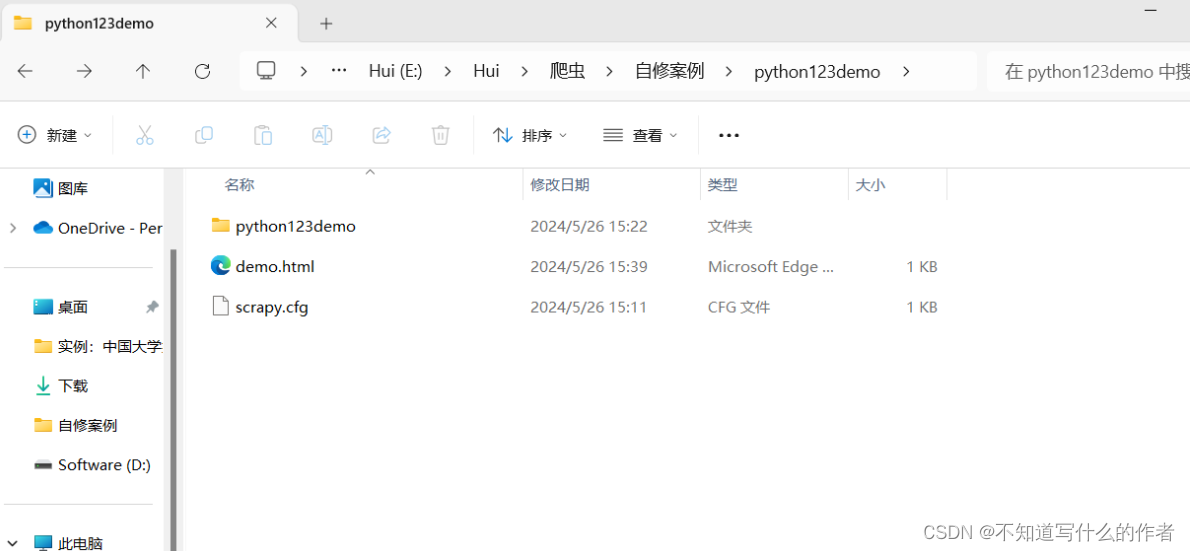
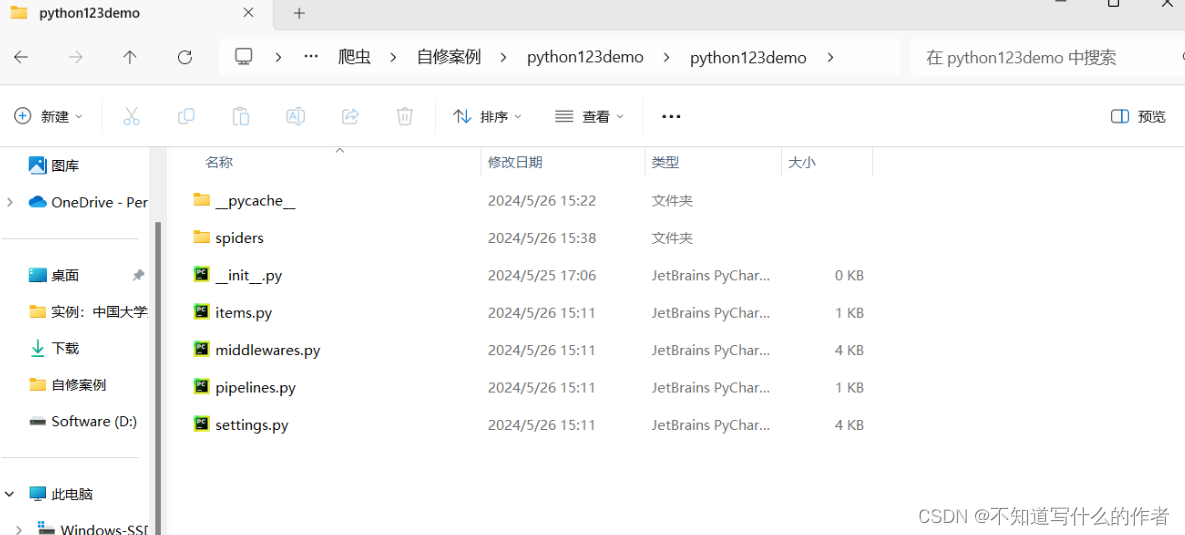
python123demo/:外层目录
scrapy.cfg:部署Scrapy爬虫的配置文件
python123demo/:Scrapy框架的用户自定义的配置文件
__int__.py:初始化脚本
items.py:Items代码模块(继承类)
middlewares.py:Middlewares代码模块(继承类)
pipelines.py:Pipelines代码模块(继承类)
settings.py:Scrapy爬虫的配置文件
spiders/:Spiders代码模块目录(继承类)
D:\>E:
E:\> cd \Hui\爬虫\自修案例
# 创建工程
E:\Hui\爬虫\自修案例>scrapy startproject python123demo
New Scrapy project 'python123demo', using template directory 'D:\Software\python3.12.2\Lib\site-packages\scrapy\templates\project', created in:E:\Hui\爬虫\自修案例\python123demoYou can start your first spider with:cd python123demoscrapy genspider example example.com2. 步骤2:在工程中产生一个Scrapy爬虫
# 创建demo文件
E:\Hui\爬虫\自修案例>cd python123demo
E:\Hui\爬虫\自修案例\python123demo>scrapy genspider demo python123.io
Created spider 'demo' using template 'basic' in module:python123demo.spiders.demo
spiders/:Spiders代码模块目录(继承类)
__init__.py:初始文件,无需修改
__pycache__:缓存目录,无需修改
import scrapyclass DemoSpider(scrapy.Spider):# 当前爬虫的名字name = "demo"# 最开始用户提交给命令行的域名:指的是爬虫在爬取网站的时候,它只能爬取这个域名以下的相关链接allowed_domains = ["python123.io"]# 以列表形式包含的一个或多个url,就是scrapy框架所要爬取的初始页面start_urls = ["https://python123.io"]#解析页面的空方法,用于处理响应,解析内容形成字典,发现新的url爬取请求def parse(self, response):pass3. 步骤3:配置产生的spider 爬虫
- 初始化url地址
- 获取页面后的解析方式
import scrapyclass DemoSpider(scrapy.Spider):# 当前爬虫的名字name = "demo"# 最开始用户提交给命令行的域名:指的是爬虫在爬取网站的时候,它只能爬取这个域名以下的相关链接# allowed_domains = ["python123.io"]# 以列表形式包含的一个或多个url,就是scrapy框架所要爬取的初始页面start_urls = ["http://python123.io/ws/demo.html"]#解析页面的空方法,用于处理响应,解析内容形成字典,发现新的url爬取请求def parse(self, response):# 将response响应的内容写入html文件中fnaem=response.url.split('/')[-1]with open(fnaem,'wb') as f:f.write(response.body)self.log(f"Saved file {name}")pass
4. 步骤4:运行爬虫,获取网页
保存在E:\Hui\爬虫\自修案例\python123demo 路径下为demo.html
E:\Hui\爬虫\自修案例\python123demo>scrapy crawl demo
2024-05-26 15:39:40 [scrapy.utils.log] INFO: Scrapy 2.11.2 started (bot: python123demo)
2024-05-26 15:39:40 [scrapy.utils.log] INFO: Versions: lxml 5.2.1.0, libxml2 2.11.7, cssselect 1.2.0, parsel 1.9.1, w3lib 2.1.2, Twisted 24.3.0, Python 3.12.2 (tags/v3.12.2:6abddd9, Feb 6 2024, 21:26:36) [MSC v.1937 64 bit (AMD64)], pyOpenSSL 24.1.0 (OpenSSL 3.2.1 30 Jan 2024), cryptography 42.0.7, Platform Windows-11-10.0.22631-SP0
2024-05-26 15:39:40 [scrapy.addons] INFO: Enabled addons:
[]
2024-05-26 15:39:40 [asyncio] DEBUG: Using selector: SelectSelector
2024-05-26 15:39:40 [scrapy.utils.log] DEBUG: Using reactor: twisted.internet.asyncioreactor.AsyncioSelectorReactor
2024-05-26 15:39:40 [scrapy.utils.log] DEBUG: Using asyncio event loop: asyncio.windows_events._WindowsSelectorEventLoop
2024-05-26 15:39:40 [scrapy.extensions.telnet] INFO: Telnet Password: 77de2e6d491b1e81
2024-05-26 15:39:40 [scrapy.middleware] INFO: Enabled extensions:
['scrapy.extensions.corestats.CoreStats','scrapy.extensions.telnet.TelnetConsole','scrapy.extensions.logstats.LogStats']
2024-05-26 15:39:40 [scrapy.crawler] INFO: Overridden settings:
{'BOT_NAME': 'python123demo','FEED_EXPORT_ENCODING': 'utf-8','NEWSPIDER_MODULE': 'python123demo.spiders','REQUEST_FINGERPRINTER_IMPLEMENTATION': '2.7','ROBOTSTXT_OBEY': True,'SPIDER_MODULES': ['python123demo.spiders'],'TWISTED_REACTOR': 'twisted.internet.asyncioreactor.AsyncioSelectorReactor'}
2024-05-26 15:39:40 [scrapy.middleware] INFO: Enabled downloader middlewares:
['scrapy.downloadermiddlewares.offsite.OffsiteMiddleware','scrapy.downloadermiddlewares.robotstxt.RobotsTxtMiddleware','scrapy.downloadermiddlewares.httpauth.HttpAuthMiddleware','scrapy.downloadermiddlewares.downloadtimeout.DownloadTimeoutMiddleware','scrapy.downloadermiddlewares.defaultheaders.DefaultHeadersMiddleware','scrapy.downloadermiddlewares.useragent.UserAgentMiddleware','scrapy.downloadermiddlewares.retry.RetryMiddleware','scrapy.downloadermiddlewares.redirect.MetaRefreshMiddleware','scrapy.downloadermiddlewares.httpcompression.HttpCompressionMiddleware','scrapy.downloadermiddlewares.redirect.RedirectMiddleware','scrapy.downloadermiddlewares.cookies.CookiesMiddleware','scrapy.downloadermiddlewares.httpproxy.HttpProxyMiddleware','scrapy.downloadermiddlewares.stats.DownloaderStats']
2024-05-26 15:39:40 [scrapy.middleware] INFO: Enabled spider middlewares:
['scrapy.spidermiddlewares.httperror.HttpErrorMiddleware','scrapy.spidermiddlewares.referer.RefererMiddleware','scrapy.spidermiddlewares.urllength.UrlLengthMiddleware','scrapy.spidermiddlewares.depth.DepthMiddleware']
2024-05-26 15:39:40 [scrapy.middleware] INFO: Enabled item pipelines:
[]
2024-05-26 15:39:40 [scrapy.core.engine] INFO: Spider opened
2024-05-26 15:39:40 [scrapy.extensions.logstats] INFO: Crawled 0 pages (at 0 pages/min), scraped 0 items (at 0 items/min)
2024-05-26 15:39:40 [scrapy.extensions.telnet] INFO: Telnet console listening on 127.0.0.1:6023
2024-05-26 15:39:41 [scrapy.downloadermiddlewares.redirect] DEBUG: Redirecting (301) to <GET https://python123.io/robots.txt> from <GET http://python123.io/robots.txt>
2024-05-26 15:39:41 [scrapy.core.engine] DEBUG: Crawled (404) <GET https://python123.io/robots.txt> (referer: None)
2024-05-26 15:39:41 [scrapy.downloadermiddlewares.redirect] DEBUG: Redirecting (301) to <GET https://python123.io/ws/demo.html> from <GET http://python123.io/ws/demo.html>
2024-05-26 15:39:41 [scrapy.core.engine] DEBUG: Crawled (200) <GET https://python123.io/ws/demo.html> (referer: None)
2024-05-26 15:39:41 [scrapy.core.scraper] ERROR: Spider error processing <GET https://python123.io/ws/demo.html> (referer: None)
Traceback (most recent call last):File "D:\Software\python3.12.2\Lib\site-packages\twisted\internet\defer.py", line 1078, in _runCallbackscurrent.result = callback( # type: ignore[misc]^^^^^^^^^^^^^^^^^^^^^^^^^^^^^^^File "D:\Software\python3.12.2\Lib\site-packages\scrapy\spiders\__init__.py", line 82, in _parsereturn self.parse(response, **kwargs)^^^^^^^^^^^^^^^^^^^^^^^^^^^^^^File "E:\Hui\爬虫\自修案例\python123demo\python123demo\spiders\demo.py", line 18, in parseself.log(f"Saved file {name}")^^^^
NameError: name 'name' is not defined. Did you mean: 'self.name'?
2024-05-26 15:39:41 [scrapy.core.engine] INFO: Closing spider (finished)
2024-05-26 15:39:41 [scrapy.statscollectors] INFO: Dumping Scrapy stats:
{'downloader/request_bytes': 896,'downloader/request_count': 4,'downloader/request_method_count/GET': 4,'downloader/response_bytes': 1981,'downloader/response_count': 4,'downloader/response_status_count/200': 1,'downloader/response_status_count/301': 2,'downloader/response_status_count/404': 1,'elapsed_time_seconds': 0.954325,'finish_reason': 'finished','finish_time': datetime.datetime(2024, 5, 26, 7, 39, 41, 875924, tzinfo=datetime.timezone.utc),'log_count/DEBUG': 7,'log_count/ERROR': 1,'log_count/INFO': 10,'response_received_count': 2,'robotstxt/request_count': 1,'robotstxt/response_count': 1,'robotstxt/response_status_count/404': 1,'scheduler/dequeued': 2,'scheduler/dequeued/memory': 2,'scheduler/enqueued': 2,'scheduler/enqueued/memory': 2,'spider_exceptions/NameError': 1,'start_time': datetime.datetime(2024, 5, 26, 7, 39, 40, 921599, tzinfo=datetime.timezone.utc)}
2024-05-26 15:39:41 [scrapy.core.engine] INFO: Spider closed (finished)
5. yield 关键字【生成器】
- 生成器是一个不断产生值的函数
- 包含yield语句的函数时一个生成器
- 生成器每次产生一个值(yield语句),函数被冻结,被唤醒后再产生一个值。
- 普通写法:
import scrapyclass DemoSpider(scrapy.Spider):# 当前爬虫的名字name = "demo"# 最开始用户提交给命令行的域名:指的是爬虫在爬取网站的时候,它只能爬取这个域名以下的相关链接# allowed_domains = ["python123.io"]# 以列表形式包含的一个或多个url,就是scrapy框架所要爬取的初始页面start_urls = ["http://python123.io/ws/demo.html"]#解析页面的空方法,用于处理响应,解析内容形成字典,发现新的url爬取请求def parse(self, response):# 将response响应的内容写入html文件中fnaem=response.url.split('/')[-1]with open(fnaem,'wb') as f:f.write(response.body)self.log(f"Saved file {name}")pass
- 生成器
yield写法:
import scrapyclass DemoSpider(scrapy.Spider):name = "demo"def start_requests(self):urls=['http://python123.io/ws/dem.html']for url in urls:yield scrapy.Request(url=url,callback=self.parse)def parse(self,response):fname=response.url.split('')[-1]with open(fname,'wb') as f:f.write(response.body)self.log(f"Saved file {fname}")
- yield一般都是于for循环连用,例如:
# 生成器写法
def gen(n):for i in range(n):yield i**2for i in gen(5):print(i," ",end='')#普通写法
def square(n):ls= [i**2 for i in range(n)]return lsfor i in square(5):print(i," ",end='')
6. Scrapy爬虫的数据类型
-
Request类
class scrapy.http.Request():- Request对象表示一个HTTP请求
- 由Spider生成,由Downloader执行
属性或方法 说明 .url Request对应的请求url地址 .method 对应的请求方法,‘GET’‘PODT’等 .headers 字典类型风格的请求头 .body 请求内容主体,字符串类型 .meta 用户添加的扩展信息,在Scrapy内部模块间传递信息使用 .copy() 复制该请求 -
Response类
class scrapy.http.Response():- Response对象表示一个HTTP响应。
- 由Downloader生成,由Spider处理
属性或方法 说明 .url Response对应的请求url地址 .status HTTP状态码,默认是200 .headers Respnse对应的头部信息 .body Response对应的内容信息,字符串类型 .flags 一组标记 .request 产生Response类型对应的Request对象 .copy() 复制该响应 -
Item类
class scrapy.item.Item():- Item对象表示一个从HTML页面中提取的信息内容
- 由Spider生成,由Item Pipeline处理。
- Item类型字典类型,可以按照字典类型操作。
-
Scrapy爬虫提取信息的方法
Scrapy爬虫支持多种HTML信息提取方法
-
Beautiful Soup
-
lxml
-
re
-
Xpath Selector
-
CSS Selector
# CSS Selector的基本使用(CSS Selector由W3C组织维护并规范) <HTML>.css('a::attr(href)').extract() #a:标签名称 href:标签属性
-
(3) 实例:股票数据Scrapy实例
1. 步骤1:建立工程和Spider模板
打开终端:win+R,输入cmd,建立工程
# 进入文件
D:\>cd \Software\pycharm\web_request
# 创建工程,其文件中包含:BaiduStocks 文件和 scrapy.cfg 文件
D:\Software\pycharm\web_request>scrapy startproject BaiduStocks
New Scrapy project 'BaiduStocks', using template directory 'D:\Software\python3.12.2\Lib\site-packages\scrapy\templates\project', created in:D:\Software\pycharm\web_request\BaiduStocksYou can start your first spider with:cd BaiduStocksscrapy genspider example example.com
# 切换视图
D:\Software\pycharm\web_request>cd BaiduStocks
# 创建爬虫 spiders模板
D:\Software\pycharm\web_request\BaiduStocks>scrapy genspider stocks baidu.com
Created spider 'stocks' using template 'basic' in module:BaiduStocks.spiders.stocks
进一步修改spiders/stocks.py文件
2. 步骤2:编写Spider
配置stocks.py文件;修改对返回页面的处理;修改对新增URL爬取请求的处理
import scrapy
import reclass StocksSpider(scrapy.Spider):name = "stocks"allowed_domains = ["baidu.com"]start_urls = ["http://quote.eastmoney.com/stocklist.html"]def parse(self,response):# 对这个页面的所有a标签进行提取# 使用CSS选择器来定位HTML中的元素# .extract()这个方法应用于前面的选择器表达式结果上,用于从选择器匹配到的所有元素中提取出实际的文本内容。for href in response.css('a::attr(href)').extract():try:# 匹配正确的url链接stock=re.findall(r"[s][hz]\d{6}",href)[0]# 组成个股链接url="https://gupiao.baidu.com/stock/"+stock+".html"yield scrapy.Request(url,callback=self.parse_stock)except:continuedef parse_stock(self, response):infoDict = {}stockInfo = response.css('.stock-bets')name = stockInfo.css('.bets-name').extract()[0]keyList = stockInfo.css('dt').extract()valueList = stockInfo.css('dd').extract()for i in range(len(keyList)):key = re.findall(r'>.*</dt>', keyList[i])[0][1:-5]try:val = re.findall(r'\d+\.?.*</dd>', valueList[i])[0][0:-5]except:val = '--'infoDict[key] = valinfoDict.update({'股票名称': re.findall('\s.*\(', name)[0].split()[0] + \re.findall('\>.*\<', name)[0][1:-1]})yield infoDict
3. 步骤3:编写Pipelines
配置pipelines.py文件;定义对爬虫取项(Scraped Item)的处理类
class BaidustocksPipeline(object):def process_item(self, item, spider):return itemclass BaidustocksInfoPipeline(object):def open_spider(self, spider):self.f = open('BaiduStockInfo.txt', 'w')def close_spider(self, spider):self.f.close()def process_item(self, item, spider):try:line = str(dict(item)) + '\n'self.f.write(line)except:passreturn item
4. 配置ITEM_PIPELINES选项
配置settings.py文件
ITEM_PIPELINES = {'BaiduStocks.pipelines.BaidustocksInfoPipeline': 300,
}
程序运行
D:\Software\pycharm\web_request\BaiduStocks>scrapy crawl stocks
D:\Software\pycharm\web_request\BaiduStocks\BaiduStocks\spiders\stocks.py:39: SyntaxWarning: invalid escape sequence '\s'{'股票名称': re.findall('\s.*\(', name)[0].split()[0] + \
D:\Software\pycharm\web_request\BaiduStocks\BaiduStocks\spiders\stocks.py:40: SyntaxWarning: invalid escape sequence '\>'re.findall('\>.*\<', name)[0][1:-1]})
2024-05-27 18:01:29 [scrapy.utils.log] INFO: Scrapy 2.11.2 started (bot: BaiduStocks)
2024-05-27 18:01:29 [scrapy.utils.log] INFO: Versions: lxml 5.2.1.0, libxml2 2.11.7, cssselect 1.2.0, parsel 1.9.1, w3lib 2.1.2, Twisted 24.3.0, Python 3.12.2 (tags/v3.12.2:6abddd9, Feb 6 2024, 21:26:36) [MSC v.1937 64 bit (AMD64)], pyOpenSSL 24.1.0 (OpenSSL 3.2.1 30 Jan 2024), cryptography 42.0.7, Platform Windows-11-10.0.22631-SP0
2024-05-27 18:01:29 [scrapy.addons] INFO: Enabled addons:
[]
2024-05-27 18:01:29 [asyncio] DEBUG: Using selector: SelectSelector
2024-05-27 18:01:29 [scrapy.utils.log] DEBUG: Using reactor: twisted.internet.asyncioreactor.AsyncioSelectorReactor
2024-05-27 18:01:29 [scrapy.utils.log] DEBUG: Using asyncio event loop: asyncio.windows_events._WindowsSelectorEventLoop
2024-05-27 18:01:29 [scrapy.extensions.telnet] INFO: Telnet Password: 3876dc1b1227236a
2024-05-27 18:01:29 [scrapy.middleware] INFO: Enabled extensions:
['scrapy.extensions.corestats.CoreStats','scrapy.extensions.telnet.TelnetConsole','scrapy.extensions.logstats.LogStats']
2024-05-27 18:01:29 [scrapy.crawler] INFO: Overridden settings:
{'BOT_NAME': 'BaiduStocks','FEED_EXPORT_ENCODING': 'utf-8','NEWSPIDER_MODULE': 'BaiduStocks.spiders','REQUEST_FINGERPRINTER_IMPLEMENTATION': '2.7','ROBOTSTXT_OBEY': True,'SPIDER_MODULES': ['BaiduStocks.spiders'],'TWISTED_REACTOR': 'twisted.internet.asyncioreactor.AsyncioSelectorReactor'}
2024-05-27 18:01:29 [scrapy.middleware] INFO: Enabled downloader middlewares:
['scrapy.downloadermiddlewares.offsite.OffsiteMiddleware','scrapy.downloadermiddlewares.robotstxt.RobotsTxtMiddleware','scrapy.downloadermiddlewares.httpauth.HttpAuthMiddleware','scrapy.downloadermiddlewares.downloadtimeout.DownloadTimeoutMiddleware','scrapy.downloadermiddlewares.defaultheaders.DefaultHeadersMiddleware','scrapy.downloadermiddlewares.useragent.UserAgentMiddleware','scrapy.downloadermiddlewares.retry.RetryMiddleware','scrapy.downloadermiddlewares.redirect.MetaRefreshMiddleware','scrapy.downloadermiddlewares.httpcompression.HttpCompressionMiddleware','scrapy.downloadermiddlewares.redirect.RedirectMiddleware','scrapy.downloadermiddlewares.cookies.CookiesMiddleware','scrapy.downloadermiddlewares.httpproxy.HttpProxyMiddleware','scrapy.downloadermiddlewares.stats.DownloaderStats']
2024-05-27 18:01:29 [scrapy.middleware] INFO: Enabled spider middlewares:
['scrapy.spidermiddlewares.httperror.HttpErrorMiddleware','scrapy.spidermiddlewares.referer.RefererMiddleware','scrapy.spidermiddlewares.urllength.UrlLengthMiddleware','scrapy.spidermiddlewares.depth.DepthMiddleware']
2024-05-27 18:01:29 [scrapy.middleware] INFO: Enabled item pipelines:
['BaiduStocks.pipelines.BaidustocksInfoPipeline']
2024-05-27 18:01:29 [scrapy.core.engine] INFO: Spider opened
2024-05-27 18:01:29 [scrapy.extensions.logstats] INFO: Crawled 0 pages (at 0 pages/min), scraped 0 items (at 0 items/min)
2024-05-27 18:01:29 [scrapy.extensions.telnet] INFO: Telnet console listening on 127.0.0.1:6023
2024-05-27 18:01:29 [scrapy.downloadermiddlewares.offsite] DEBUG: Filtered offsite request to 'quote.eastmoney.com': <GET http://quote.eastmoney.com/robots.txt>
2024-05-27 18:01:29 [scrapy.downloadermiddlewares.redirect] DEBUG: Redirecting (302) to <GET http://quote.eastmoney.com/center/gridlist.html#hs_a_board> from <GET http://quote.eastmoney.com/stocklist.html>
2024-05-27 18:01:30 [scrapy.core.engine] DEBUG: Crawled (200) <GET http://quote.eastmoney.com/center/gridlist.html#hs_a_board> (referer: None)
5. 配置并发连接选项
settings.py文件
| 选项 | 说明 |
|---|---|
| CONCURRENT_REQUESTS | Downloader最大并发请求下载数量,默认为32 |
| CONCURRENT_ITEMS | Item Pipeline最大并发ITEM处理数量,默认100 |
| CONCURRENT_REQUESTS_PER_DOMAIN | 每个目标域名最大的并发请求数量,默认8 |
| CONCURRENT_REQUESTS_PER_IP | 每个目标IP最大的并发请求数量,默认0,非0有效 |

